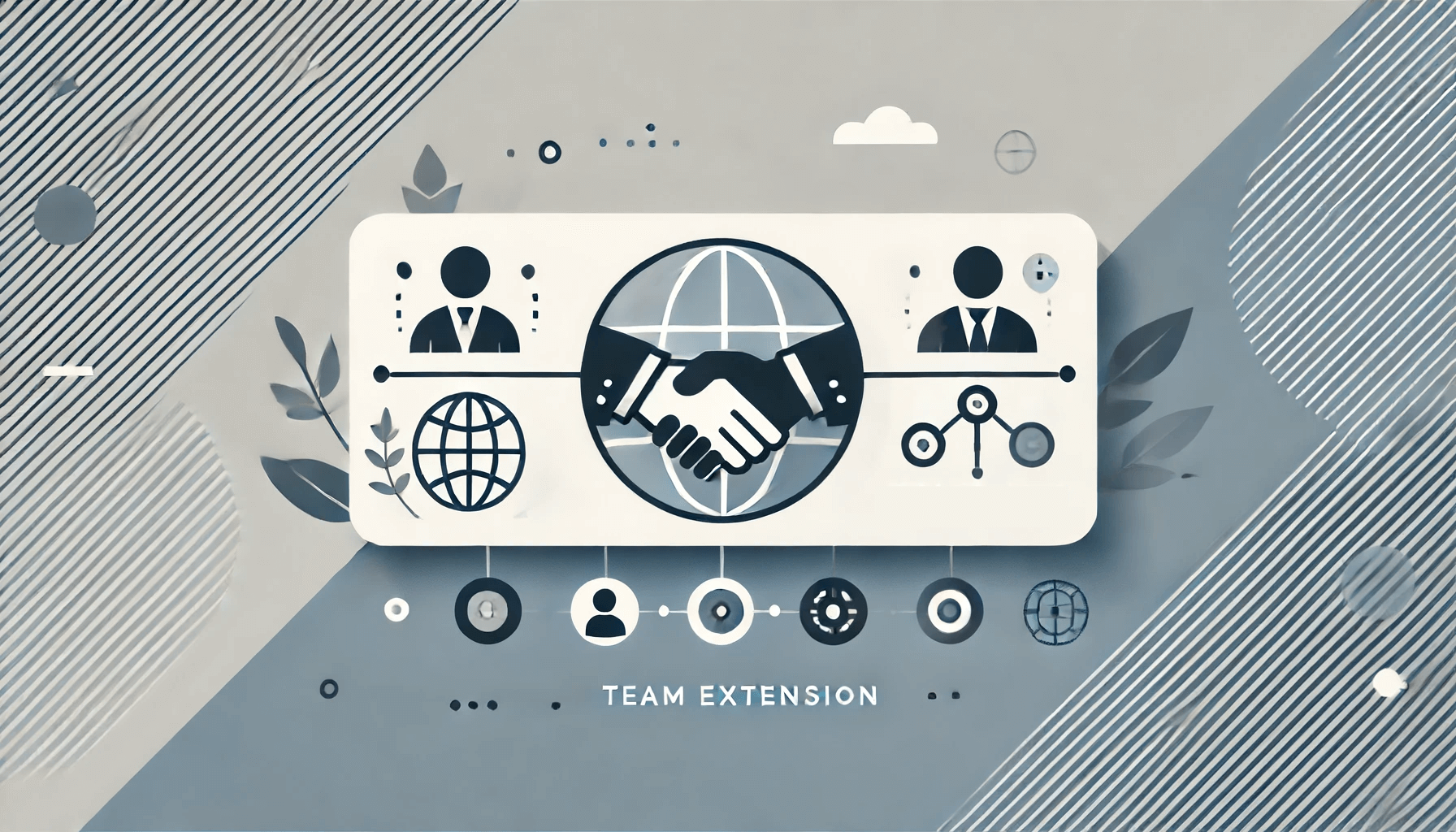Team Extension
Supercharge your business with team extension! Learn how to access global talent, boost efficiency & scale your team for growth.

In today's rapidly evolving business landscape, companies are constantly seeking ways to optimize their operations, increase agility, and gain a competitive edge. One powerful strategy that has emerged as a game-changer is team extension. This approach allows businesses to seamlessly expand their in-house teams with skilled professionals from around the globe, unlocking a wealth of benefits and driving growth.
What is team extension?
Team extension is a strategic approach to outsourcing where companies partner with external service providers to supplement their existing teams with specialized expertise and skills. This involves hiring remote developers, designers, engineers, or other professionals who become an integral part of the company's workforce, working closely with the in-house team to achieve shared goals.
Benefits of team extension
Team extension offers a myriad of benefits, including:
-
Access to a global talent pool
-
Cost efficiency
-
Increased flexibility
-
Improved time to market
-
Focus on core business
Understanding the Team Extension Model
The team extension model involves several key steps:
-
Identify project requirements: Determine the specific skills and expertise needed for the project.
-
Partner with a reputable service provider: Choose a service provider like Lexunit with a proven track record and expertise in the required areas.
-
Onboard and integrate the extended team: Provide the extended team with the necessary training, tools, and access to the necessary company systems.
-
Manage the project collaboratively: Foster effective communication and collaboration between the in-house and extended teams.
-
Monitor performance and results: Regularly assess the performance of the extended team to ensure they are meeting expectations and contributing to project success.
Key Differences from Dedicated Teams
While team extension and dedicated teams both involve outsourcing, there are key differences:
Team Extension vs. Dedicated Teams
Typical Uses
Team extension is commonly used for:
Advantages of Team Extension
Challenges of Team Extension
How to Choose a Team Extension Partner
Key factors to consider
When choosing a team extension partner, consider the following factors:
-
Expertise and experience: Look for partners with a proven track record in your industry or domain.
-
Talent pool: Ensure they have access to a diverse and skilled talent pool that meets your specific requirements.
-
Communication and collaboration: Assess their communication capabilities, including language fluency and cultural sensitivity.
-
Project management and processes: Evaluate their project management methodology, quality assurance processes, and reporting mechanisms.
-
Client testimonials and references: Check their client testimonials and references to gauge their reputation and track record.
-
Pricing and transparency: Understand their pricing model, contract terms, and payment schedules.
Due diligence steps
To ensure you choose the right partner, conduct thorough due diligence, including:
-
Request a proposal: Obtain a detailed proposal outlining their services, pricing, and project methodology.
-
Conduct interviews: Meet with potential partners to discuss your project requirements and assess their expertise and communication skills.
-
Review their portfolio: Examine their previous projects and client testimonials to evaluate their capabilities and track record.
-
Check their references: Contact their previous clients to get independent feedback on their performance and reliability.
-
Negotiate contract terms: Clarify all contractual terms, including payment terms, intellectual property rights, and dispute resolution mechanisms.
Successful Team Extension: Best Practices
Conclusion
Team extension offers a powerful way to boost your business by unlocking access to a global talent pool, improving cost efficiency, enhancing flexibility, accelerating time to market, and allowing you to focus on your core business.
Success with team extension requires a strategic approach. Carefully choose your team extension partner, define clear project requirements, establish effective communication, and invest in building a strong and collaborative team.
Ready to unlock the power of team extension? Take the next step by exploring your project requirements, and embracing this innovative approach to accelerate your business growth.
In case of question please feel free to reach out our team!

